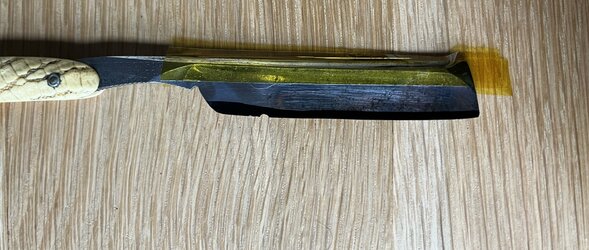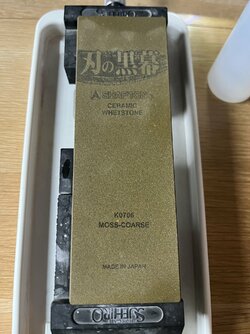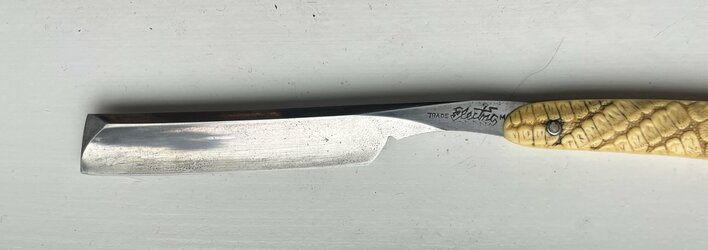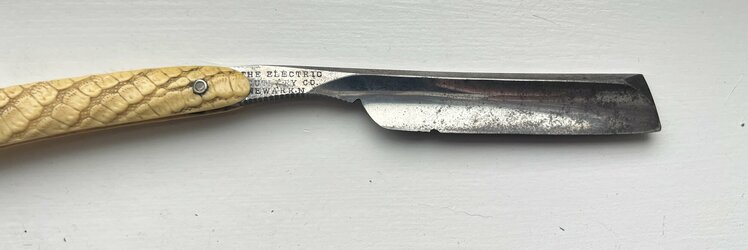I’ve read a couple other chip restoration threads. Realizing each case is a little different, here goes.


I picked this Electric Company razor up at a thrift store visiting family. It’s just too cool to not try and restore, but has a sizeable chip. I realize removing it will reduce the razor’s already narrow height, and it will change the bevel angle. I haven’t reworked a razor with quite so much damage before.
Besides the obvious rust removal - what approach would others take
Thanks for taking a look, appreciate the help.
I picked this Electric Company razor up at a thrift store visiting family. It’s just too cool to not try and restore, but has a sizeable chip. I realize removing it will reduce the razor’s already narrow height, and it will change the bevel angle. I haven’t reworked a razor with quite so much damage before.
Besides the obvious rust removal - what approach would others take
- Grind the chip out edge straight into the stone, working to preserve the edge profile
- Hone normally until the chip is removed
- with tape?
- without tape?
- spine raised off the stone around 45 degrees, then lie flat and hone as normal
- Ignore the chip - hone as normal until I get down to good steel, carefully round the corner of the chip so I don’t cut my face, and move on with life
Thanks for taking a look, appreciate the help.
Last edited:








